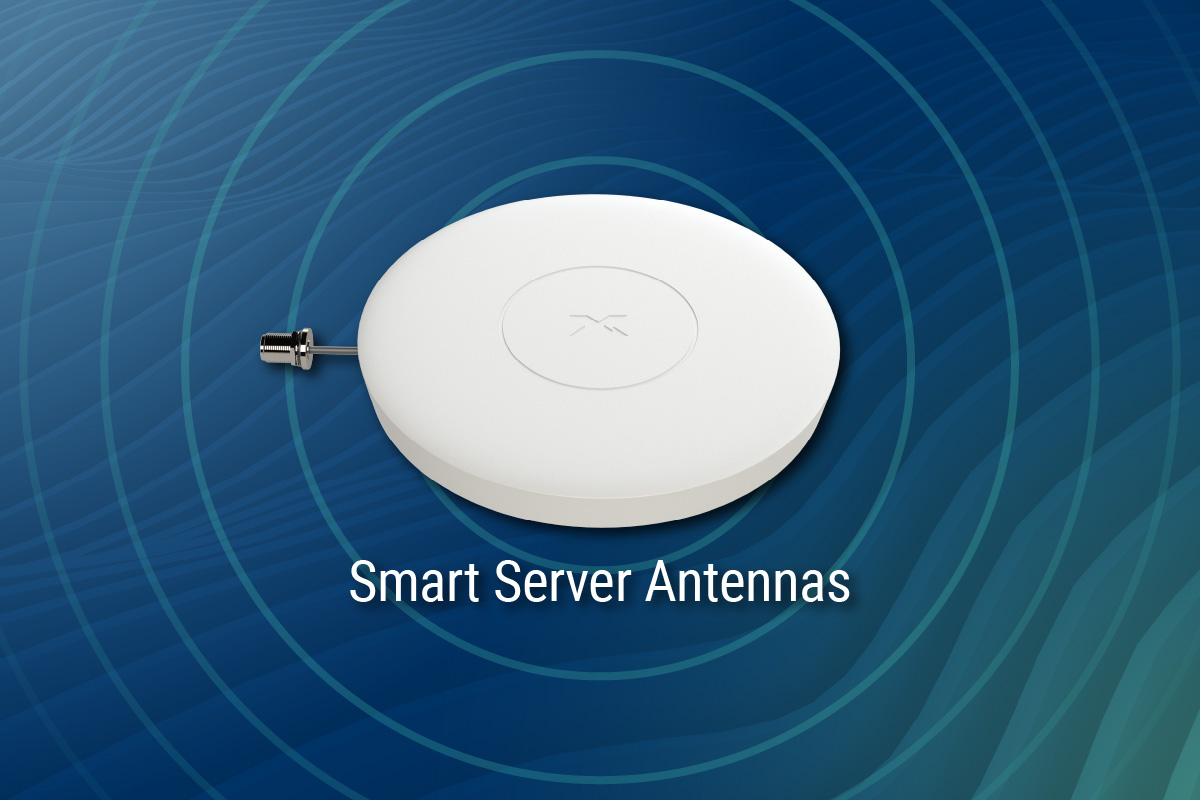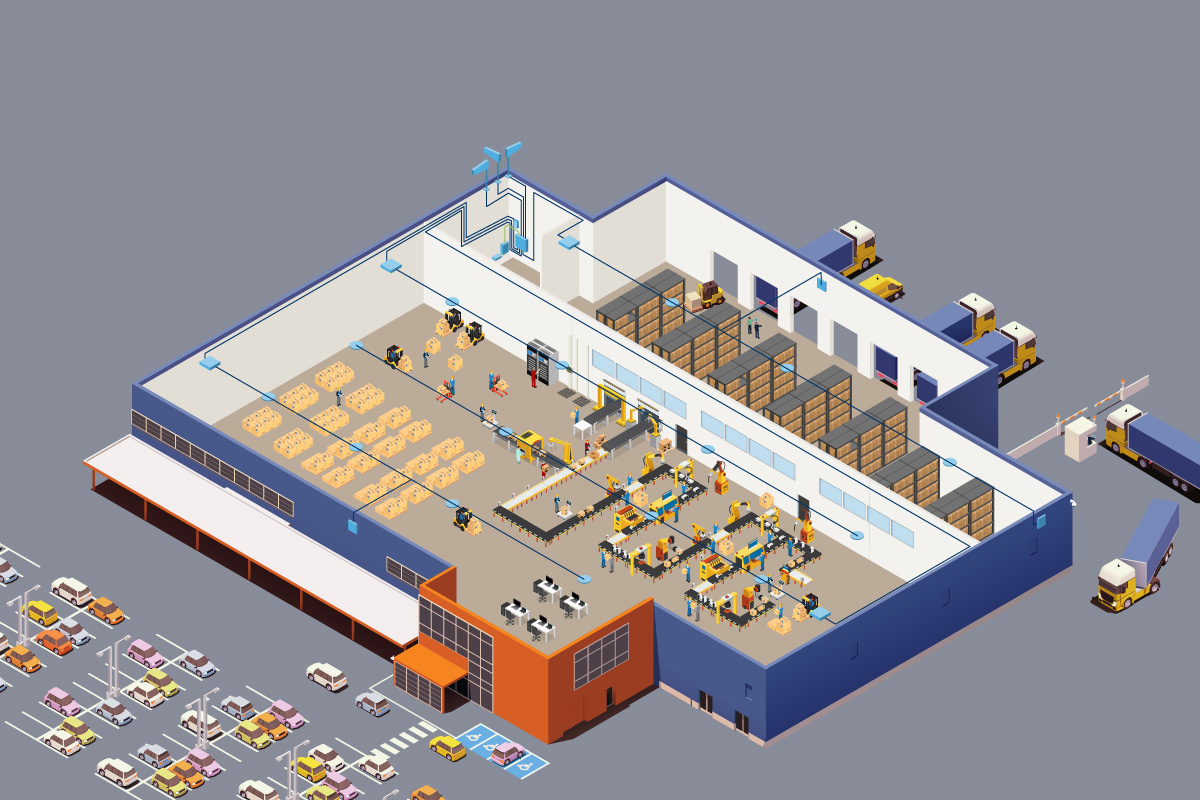If your building is on fire or some other emergency is occurring on the premises that threatens lives or property, you depend on a well-honed and coordinated team of first responders to save the day. And they do. But when communications are down between the on-site emergency personnel or with dispatch or the multiple agencies needed to deliver the emergency services, emergency efforts may be delayed. Every minute lost due to poor or unavailable communication can cost lives and result in more extensive damage to property.
Voice communications provide continuous connectivity for public safety responders that are charged with managing and mitigating emergencies. Unfortunately, communication system failures do happen at times when first responders need them most. In a recent survey by the Safer Building Coalition of first responders, more than 65% said they had experienced some sort of communication failure inside a building in the last 24 months.
“One of the most important and perhaps overlooked elements of building requirements are the local ordinances, and requirements of agencies such as the National Fire and Protective Association to include in-building communications for public safety responders as well as existing commercial broadband networks.”
- Andrew Seybold, author of The Public Safety Advocate, a weekly column which can be found at allthingsfirstnet.com
Why are there public safety communication system failures?
The public safety community has relied on Land Mobile Radio (LMR) systems since the 1930s. As LMR systems evolved, varying and often disparate technologies were developed and deployed in new and upgraded systems across the nation. As a result, the public safety community has struggled with interoperability, making it difficult to facilitate communications across jurisdictional and agency lines. In buildings, particularly those located at jurisdictional boundaries such as county lines or those in dense urban environments, there may be a wide variety of frequencies and radio services used by local first responders that add to system complexity and cost.
To compound the problem, in-building communications using LMR experience the same issues as cellular coverage: LMR network towers are typically outdoors, so signal penetration through challenging RF environments and building materials such as concrete is problematic. Low-emission certified (LEED) buildings are particularly challenging with the high attenuation properties of the coatings used to make the buildings energy-efficient. These obstacles in the environment or building construction may be responsible for preventing a first responder from connecting over LMR for vital communications.
The public safety community continues to make strides in improving public safety communications and interoperability while also strengthening responsiveness and preparedness at all levels of government.
In February 2012, the Middle-Class Tax Relief and Job Creation Act authorized the development and implementation of the National Public Safety Broadband Network (NPSBN). The law also established the FirstNet Authority as an independent body governing the NPSBN; set aside $7 billion for network development, deployment, and operation; and assigned the use of specific frequencies to the FirstNet Authority for exclusive use of the public safety community. As envisioned, the network incorporates open, commercial wireless technology standards, in particular cellular 4G LTE, to provide access to mission-critical applications used by first responders.
The net effect of this is that, in the United States, there are now two standard radio communications systems in play in public safety: LMR and FirstNet.
However, because FirstNet is an LTE broadband cellular network, it comes with the same connectivity issues for first responders as the LMR network.
At the same time, public safety currently uses wireless data services over commercial cellular networks for many mission-critical functions and data, such as dispatch; local, regional, state, and national and international license, vehicle, wanted person, and criminal history database queries; messaging; and transmission of real-time video and imagery. It is also critical that people trapped in a building during a fire or other emergency are able to use their cellular phones to connect with first responders for rescue.
What can commercial real estate owners do about it?
“The technologies required to ensure that both building occupants and first responders can stay connected inside buildings is essentially identical,” says John Foley, Safer Buildings Coalition Managing Director. “Smart building owners are leveraging in-building public safety communication code-compliance to help prove in the financial model for adding cellular coverage and other technologies that ride on top of the same core infrastructure: pathway, conduit, fiber, distributed power, and passive components. It’s a smart play.”
Property owners and managers who are looking at a five to 10-year technology horizon should be preparing their properties for both FirstNet and for traditional LMR systems, along with good coverage for commercial cellular (occupant cell phones, tablets, etc.).
Public safety and commercial cellular systems are similar, but there are very important differences
There are vendors who claim their equipment “supports public safety” because the radios they manufacture operate within public safety frequencies. This can be a mine field for an unaware or unprepared property owner, or a system integrator unfamiliar with either the local requirements or the category. The ENTIRE SYSTEM – not just the radios – needs to meet the public safety requirements in order to acquire a certificate of occupancy (CO). A bi-directional amplifier (BDA) might support the radio frequencies on site, but does it meet the other safety requirements, like UL2524 listing? Does it support the IFC 510 alarms? Does it directly connect with the fire panel in the building, or does some sort of intermediary interface need to be installed?
Systems also diverge in the areas designated for coverage. In a commercial cellular system, many buildings owners may be primarily concerned with covering the public spaces, lobbies, car parks, hallways, etc. In a public safety system, the coverage needs are very different in spaces like a fire-safe room, elevator lobbies, stairwells, rooftops, and all of the buildings ingress and egress points. A public safety system requires battery backup. Commercial cellular does not. An attempt to do all of the above in one solution is likely to lead to unacceptable compromises, or exorbitant cost points.
LMR networks and the FirstNet public safety broadband networks are evolving in parallel. As communications evolve, public safety is likely to continue to use the reliable mission-critical voice communications offered by traditional LMR systems. At the same time, agencies will continue to implement emerging wireless broadband services and applications.
Mission-critical voice is coming soon to FirstNet. “If and when the technical and non-technical requirements are met, it is anticipated that some agencies will further integrate FirstNet partially or entirely into their communications network.”, per the Department of Homeland Security. This is not to say that LMR solutions are going away, but instead that FirstNet solution requirements have begun to be layered in by jurisdiction.
For a building owner to be proactive in public safety planning, it is helpful to understand key requirements in the Codes.
Code compliance
A properly-functioning in-building system is typically required in order to receive a CO or a temporary CO.
Three things determine the specific requirements for any given building to be deemed “safe” by the inspector (in the context of in building communications):
- A variety of code references, like the NFPA 1221, IFC 510, and UL 2524. These codes provide specific guidance for form and function of in-building systems, as well as how they must be installed, documented, and monitored.
- The jurisdiction’s specific implementation of the codes. Each jurisdiction uses the code references in a way it feels works best for the needs of the community and local first responders. For example, the code might require 12-hour battery backup but the jurisdiction decides 24-hours is more appropriate for its use case.
- The Authority Having Jurisdiction’s (AHJ) interpretation of the above codes, and enforcement process. The AHJ is the inspector. The AHJ will typically have preferred testing methods, and defined procedures. In any given jurisdiction, the AHJ is often referred to as the “Giver Of Decisions” and is the ultimate arbiter of compliance.
In-building systems: pieces and parts
Because of the great variation from jurisdiction to jurisdiction in radio frequency use, code implementation, code interpretation, and equipment availability, most in-building public safety systems are a mish-mash of off-the-shelf components, cobbled together by a systems integrator, with a best effort to meet performance, cost, and time-to-market expectations.
When it comes to in-building code compliance there are a few areas that deserve special attention.
Radios and/or BDA
Every jurisdiction has a set of pre-defined frequencies that will be used. This can encompass LMR bands, FirstNet, or a combination of both. It is important to consider how these have been defined prior to determining any solutions, because not all solutions or vendors support all radio types. The VHF frequencies are not supported by many vendors, for example, which limits options, and FirstNet is newer technology, not available everywhere yet.
Pathway survivability
Pathway survivability defines the duration and requirements for conduits and risers, and system components, to survive a fire. Normally there are specifications for circuit integrity, cable integrity, fire-rated enclosures, and some sort of alternative method approved by the AHJ.
Battery backup
This is an extremely important requirement for property technology managers to understand. This is an area where commercial grade and public safety grade systems diverge. The first thing the fire department does in a fire incident is cut building power. Therefore, public safety systems have a requirement for battery backup. Current guidelines and implementations are leaning towards 12-hour backup being the norm. Some jurisdictions/AHJs may require 24 hours. Having a generator on site can provide a waiver, if it’s installed in a manner supporting the spirit of this requirement. Commercial systems will not require or offer (or potentially SUPPORT) battery backup, and therefore may be eliminated as a potential public safety system. Many vendors overlook this requirement and lead system integrators and property technology managers down a misleading path with their commercial gear.
NEMA 4
Public safety equipment is required to be NEMA 4 rated. This is designed to protect in-building public safety gear from the effects of water, via hose or sprinkler system. A lot of “public safety” equipment does not come with a NEMA 4 rating, so the installers are forced to kluge the system together inside NEMA rated off-the-shelf boxes, which can add cost, size, or other negative complexities to the solution.
Monitoring
Given public safety systems are not typically used except during an emergency, they can fall into disrepair. It’s not uncommon for building engineers or maintenance staff to unknowingly and mistakenly break some component of an installed system. It’s easy to cut a cable, unplug a component, or otherwise negatively impact a system. Traditionally these systems were not monitored or maintained with any enthusiasm, so in times of an emergency, it wouldn’t be uncommon for a system to fail or not perform as well as desired. For that reason, many jurisdictions are requiring system monitoring, enabled by alarms and alerts that can be generated and reported by the system in the incident of a failure.
FirstNet
All 50 states, five U.S. territories and Washington, D.C. have opted in to FirstNet, meaning each has accepted its individual state plan detailing how the network will be deployed in their state/territory. As of this writing, over 7,000 agencies have signed on with more than 570,000 subscribers. The network is 53% complete, running ahead of schedule. Jurisdictions are transitioning from LMR to FirstNet, in many cases supporting both. As a building owner or property technology manager, it’s very important to understand the local first responders’ status with FirstNet. In-building solutions can support just LMR, just FirstNet, or both.
Pricing
Pricing for in-building ERRCS systems is typically composed of three elements: equipment; labor; and, a service agreement for monitoring and maintenance. The split between the equipment and labor should be approximately 50/50. Service agreements are usually a very small part of the budget, normally with one annual review. Modern equipment can be monitored remotely, which offers some very attractive advantages. There are many business models presented from the community of installers, which will lead to variations in pricing. The equipment selected will also drive cost ratios, with some equipment types being more expensive but requiring less labor, or vice versa. For example, an all-passive, traditional BDA-style system will have less expensive equipment, but requires a variety of highly skilled integrators to ensure RF performance is passable. Overall, building owners could expect to pay around $1 per square foot for public safety ERRCS systems.
Recommendations
Property owners and/or managers will benefit from working with partners who are very familiar with the local code implementation, as well as the AHJ to understand how the AHJ interprets and tests.
The good news is there are a variety of solutions coming to market today that will meet the needs of both LMR and FirstNet. The codes and system elements detailed in this article provide a good basic checklist when evaluating a system with a local partner.
A version of this article was originally published by Connected Real Estate Magazine



